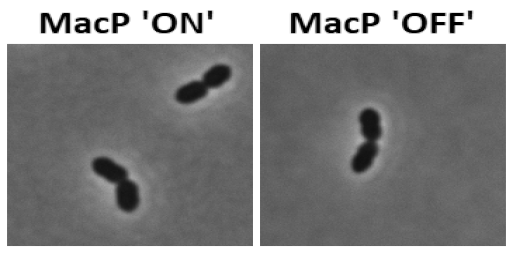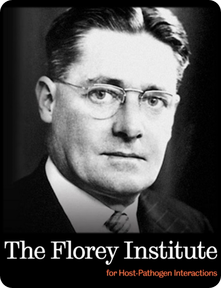Most infectious bacteria are surrounded by a strong cell wall that protects them from breakage. Penicillin, and similar antibiotics have been used to treat serious infections for decades by compromising the strength of the cell wall, killing the bacteria and hopefully saving the patient. Penicillin works by selectively ‘shutting down’ a critical component in a large machine that is constantly building new cell wall as the bacteria grow.
Researchers set out to investigate how the cell wall building machinery is controlled in the bacterium Streptococcus pneumoniae, which causes serious infections like pneumonia, sepsis and meningitis. They used a DNA sequencing technique to search for new genes involved in the cell wall construction pathways. Through this work they identified MacP; a new protein component that is required for cell wall construction – effectively acting as an ‘on/off switch’.
This finding links cell wall growth to many other developmental processes within the cell and further work will help us to understand how the MacP-switch operates and, ultimately, what signals trigger the function of the cell wall building machines.
Dr Fenton, who led the study in Sheffield, explains:
“The last few years has seen a revolution in the way we think about cell wall growth in bacteria. Recent findings have redefined the biochemical activities of many factors we thought we understood. This paradigm shift has opened many exciting lines of investigation, including how the cell wall building machinery is regulated.”
“It is now clear that different types of bacteria approach the regulation of cell wall growth in different ways. This study breaks new ground in our understanding and links cell wall growth to central regulatory processes within the bacterial cell.”
“With bacteria pushing back against antibiotic treatment there is an ever-increasing burden on current clinical practices. Cell wall growth remains one of most widely used targets when treating bacterial infections. Therefore, there has never been a more urgent need for us to understand these processes.”
The full paper entitled: Phosphorylation-dependent activation of the cell wall synthase PBP2a in Streptococcus pneumoniae by MacP has been published recently in PNAS (Proceeding of the National Academy of Sciences). READ IT HERE.
For more British Science week stories, follow the official hashtag on twitter at #BSW18

